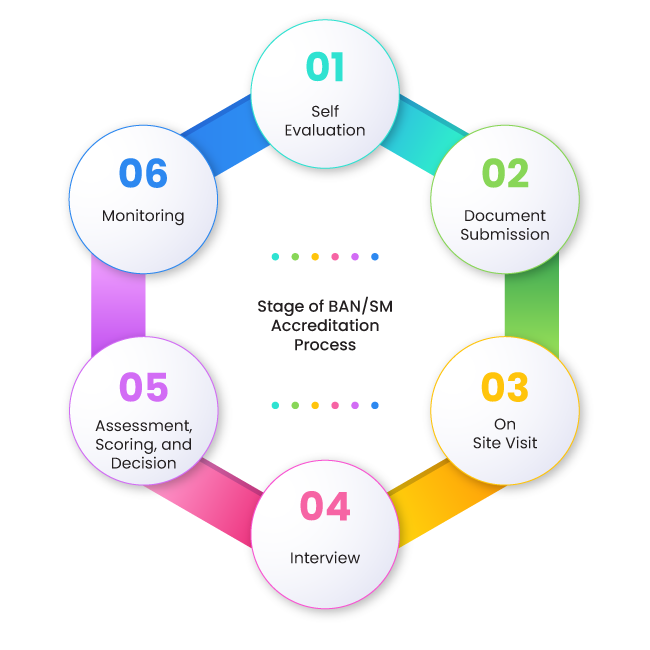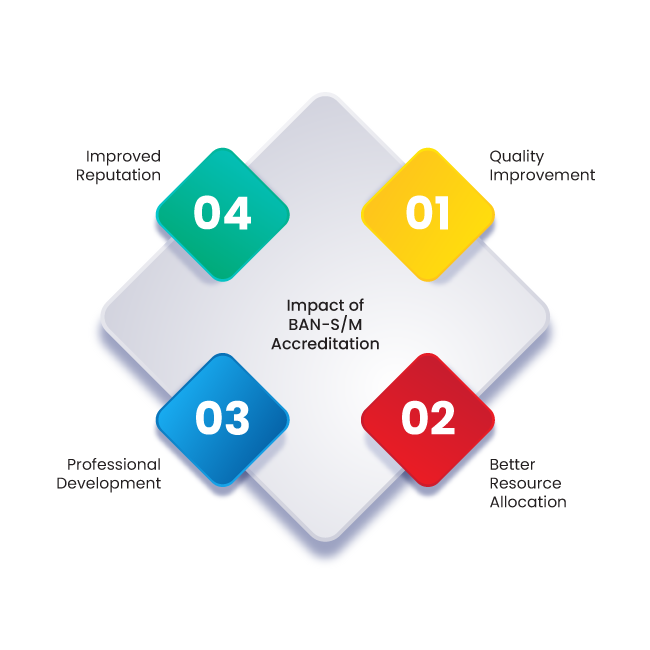Uneven education outcomes across different regions, significant disparities in education quality, and a lack of qualified teachers are some of the crucial issues in Indonesian schools. The government’s well-thought-out strategies and policies have been instrumental in bringing necessary changes. That is where BAN-S/M plays a crucial role in improving the school education in Indonesia.
What is BAN-S/M?
BAN-S/M, or Badan Akreditasi Nasional Sekolah/Madrasah, is the official accreditation body that functions under the Ministry of Education, Culture, Research, and Technology. It evaluates the performance of schools, depending on the national education standards, encouraging them to hire qualified teachers and provide sufficient resources.
Moreover, the accreditation process determines whether or not the school can facilitate effective education and establish an enriching environment for students’ holistic development. Therefore, BAN-S/M carries out a systematic evaluation process to assess crucial aspects like:
- Governance
- Curriculum implementation
- Student achievement
- Infrastructure
- Learning resources
The accrediting body categorizes schools into different accreditation levels, like A, B, C, D, and Not Accredited, depending on their compliance with pre-established criteria. Besides, the accreditation indicates high-quality education and the school’s commitment to regulating their overall functionalities.

Stage of BAN/SM Accreditation Process
1. Self-Evaluation
The first step of the process requires schools to conduct an internal assessment, wherein they objectively analyze curriculum implementation, teacher qualifications, student performance, and infrastructure. This is where teaching staff and school management must work together and collect relevant data.
Consequently, they can identify their strong and weak areas; hence, they can take necessary steps to make important changes before the official accreditation review. After the completion of the self-evaluation, schools include the findings in a detailed report and submit it to BAN-S/M.
The report includes supporting documents like academic records, teacher certifications, lesson plans, and financial management reports. Schools must ensure the accuracy of the documents, as they form the basis for the next stages of the accreditation process.
2. Document Submission
Submitting the supporting documents is an important part of the BAN-S/M accreditation process; therefore, schools must organize them and prepare for submission. Some of the key documents include student assessment results, school policies, teacher development programs, and facility management records.
The documentation phase allows schools to be transparent in their core functionalities and allows the accrediting agency to conduct an initial review before the on-site visit.
Understanding BAN-PT Accreditation: A Guide for Indonesian Universities
3. On-Site Visit
The third step of the process entails the accrediting agency conducting an on-site visit, wherein the team of experts visits the school premises for an in-person inspection. The team consists of two or more assessors, and they interact with the school principal, teachers, school committee members, and sometimes student representatives in an official meeting.
The assessors give a brief explanation regarding the purpose of their visit, while the principal provides an overview of the school administration. The rest of the on-site visit takes place in the following manner:
- Assessors review the original documents, whose digitalized copies the school management submitted online. This is a crucial step to ensure the accuracy and authenticity of the submitted documents.
- School will need to provide additional documents as per the requests and clarification of BAN-S/M.
- Assessors critically analyze the documents to determine the effectiveness of teaching methodologies, classroom management, student engagement, and curriculum implementation.
- They will review the infrastructure and facilities by inspecting classrooms, laboratories, sports facilities, sanitation facilities, and administrative areas.
4. Interview
The assessors interview stakeholders of the school to get real-time insight into the overall school environment and education quality. Initially, they interact with the principal to determine the school’s vision, management, leadership, and ongoing strategies to mitigate recurring issues.
Interviews with the teaching staff allow them to understand primary teaching methodologies, professional development strategies, and the common challenges. On the other hand, interacting with students helps them identify their primary problems, the school environment, and individual learning experiences.
Interviews with parents/school committees provide them with insights into the support services, policies, the school’s community engagement, etc. Assessors will compare the information mentioned in the documents with the interviews and observations to determine validity and consistency.
5. Assessment, Scoring, and Decision
After the on-site visit, the assessors analyze their findings and observations and allocate a score to different aspects of school performance. For instance, quality of teaching, student academic achievements, infrastructure adequacy, and administrative effectiveness are the major areas that get specific scores based on the set criteria.
The assessment and scoring mechanism reflects the comprehensive operations of the school and highlights the respective strengths and weaknesses. BAN-S/M provides an accreditation rating to the school, depending on the scores that it obtained. The ratings are as follows:
- A (Excellent) - This indicates that the school or madrasah has surpassed the National Education Standards (SNP) and demonstrates excellent characteristics like high achievement, quality resources, strong management, continuous improvement, etc.
- B (Good) - Indicates that the school or madrasah meets the National Education Standards (SNP) and demonstrates good academic and non-academic achievements.
- C (Sufficient) - Indicates that the school or madrasah meets the minimum National Education Standards (SNP) but needs improvement in major areas, like teaching, resources, and management.
- Not Accredited—A school or madrasah gets a ’Not Accredited” status when it does not meet minimum SNP standards due to significant inconsistencies, inadequate documentation, non-compliance with regulations, etc.
6. Monitoring
Once a school is accredited, it needs to carry out the necessary steps to ensure regular maintenance of the national standards. They need to submit progress reports, wherein they must include the evidence to point out the improvements the school has made so far.
On top of that, BAN-S/M analyzes several data points highlighting the school’s performance in various areas, like student achievement data (national exam results, etc.), enrollment trends, teacher qualifications, and resource utilization.
Additionally, they might conduct random inspections and surveys; therefore, schools must prioritize complying with the required standards for quality education.

Impact of BAN-S/M Accreditation
Quality Improvement
The accreditation process encourages the schools to improve the quality of the eight National Education Standards, including curriculum and subject matter, teaching and learning processes, educator and education personnel standards, etc.
Simultaneously, they strive to maintain the quality of the school’s infrastructure and facilities, like libraries, laboratories, classrooms, sports facilities, etc. Besides, periodic re-accreditation ensures that schools implement the necessary changes to meet the quality standards.
Better Resource Allocation
Accredited schools are more likely to secure government funding and financial assistance to improve their infrastructure and educational resources. In effect, schools can focus on delivering top-notch educational facilities and providing an adequate student support system.
Professional Development
Effective teaching and learning methods are central to ensuring better student learning outcomes and academic success. Therefore, the accreditation process encourages schools to develop opportunities such as professional development programs.
For instance, teacher training programs, workshops, seminars, and digital literacy initiatives aim to help teachers learn strategic pedagogies, assessment techniques, etc. Furthermore, it establishes an environment of self-improvement, urging educators to stay updated regarding the latest practices and educational trends.
Improved Reputation
An accredited status indicates the excellent quality of a school’s overall operation, enhancing its credibility and reputation among students, parents, and the community. Higher accreditation ratings improve the school’s reliability, leading to better industry partnerships, collaboration, and funding opportunities.
Conclusion
BAN-S/M accreditation regulates the quality of Indonesian school education by establishing criteria and standards. Therefore, schools make continuous efforts in improving the fundamental components of their day-to-day operations, including school management, education quality, and teaching effectiveness.
Click for a digitally empowered campus
 Author :
Author :
Gaurav Somani,
Academic Consultant